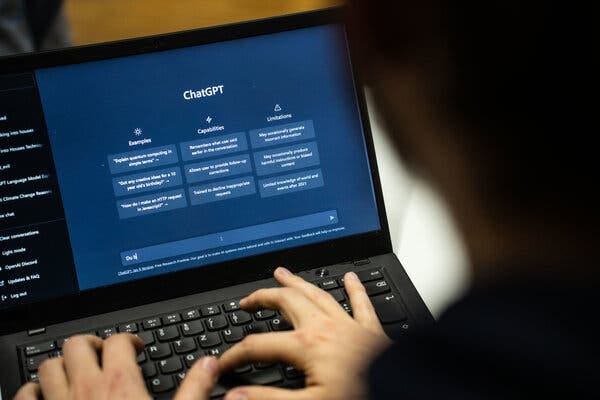To paraphrase the pithy poet Bob Dylan above, “The times, they are a-changin’” with AI indeed. After hundreds of billions of investments kicked off in 2023 on the AI Tech Wave, this year will be about figuring out what AI is good after getting us all scared and excited at the same time.
As Axios puts it succintly in “AI gets real in 2024”:
“2024 will be the year the AI industry gets serious about trying to deliver results across a wide slice of business and life, moving beyond the hype surrounding the successes of ChatGPT and chipmaker Nvidia, Megan Morrone and I report.”
“Why it matters: Everyone using AI will be looking for proof that it's making their life or work better following 2023's surges of enthusiasm and fear.
AI providers are hunting for profitable business models that can support expensive-to-run generative AI systems.
Business leaders want to move beyond AI brainstorming and pilot phases and begin offering leaps in efficiency, productivity and creativity.”
“The big picture: The industry's rise in the second half of 2023 created a mismatch between AI's sky's-the-limit potential and its challenging realities — hallucinating chatbots, hard-to-obtain GPU chips, liabilities around copyright and concerns about bias and accuracy.”
“With the arrival of smaller and specialized AI models, and the availability of more AI tools on mobile devices, the landscape could improve.”
That sets the stage well for AI in 2024, especially in terms of businesses figuring out what works and doesn’t work at scale with AI at its current capabilities and shortcomings.
The New York Times in “ChatGPT Helps, and Worries, Business Consultants, Study Finds” provides new data on what is actually working and is not with current LLM AIs:
“The AI tool helped most with creative tasks. With more analytical work, however, the technology led to more mistakes.”
“Last spring, when Karim Lakhani began testing how ChatGPT affected the work of elite business consultants, he thought they’d be delighted by the tool. In a preliminary study of two dozen workers, the language bot had helped them finish two hours’ worth of tasks in 20 minutes.
“I assumed they, like me, would think, ‘Great! I can do so much more!” said Dr. Lakhani, a professor at the Harvard Business School.”
“Instead, the consultants had feelings of unease. They appreciated that they had done better work in less time. But ChatGPT’s quick work threatened their sense of themselves as high-skilled workers, and some feared relying on it too much. “They were really worried and felt like this was going to denigrate them and be sort of empty calories for their brain,” Dr. Lakhani said.”
It was a formal study with control groups:
“Dr. Lakhani and his colleagues devised a larger, controlled experiment to measure how ChatGPT would affect more than 750 white-collar workers. That study, which is under review at a scientific journal, indicated sharply mixed results in the consultants’ work product. ChatGPT greatly improved the speed and quality of work on a brainstorming task, but it led many consultants astray when doing more analytical work.”
The piece vividly highlights the current promise and potential perils, especially in terms of AI and jobs (Prometheus link below mine):
“The study also detailed workers’ varied feelings about the tool. One participant compared it to the fire Prometheus stole from the gods to help mortals. Another told Dr. Lakhani’s colleague Fabrizio Dell’Acqua that ChatGPT felt like junk food — hard to resist, easy to consume but ultimately bad for the consumer.”
In the near future, language bots like OpenAI’s ChatGPT, Meta’s Llama and Google’s Gemini are expected to take on many white-collar tasks, like copy writing, preparing legal briefs and drafting letters of recommendation. The study is one of the first to show how the technology might affect real office work — and office workers.”
The whole piece is worth a read. But it highlights what we may already suspect AI can deliver in the near term, and where it falls short. The need to go into this with open eyes is important, both for business and individual users.
Studies like the ones above are good first steps to getting our bearings as we kick off an AI-fueled 2024.
This New Year is going to see a lot more of this candid, analytical look at AI, after the initial sweep of euphoria and fear last year. A balancing act that will continue of course this year between ‘AI Safety vs Speed’.
As I’ve stated so often before, it’s going to be a long, multi-year road. With AI changing a lot of things as we figure it out.
And the financial cycles will often not mesh with the secular cycles of the underlying AI technologies. We’ve seen this in other tech waves, and it’ll happen even more here given the more nascent nature of the underlying AI technologies. And take longer than we all currently think.
The other thing to be mindful of is that it’s way too early to call the winners and losers. Again to quote Dylan from his “Times they are a-changin’” song paraphrased above:
“The slow one now
Will later be fast
As the present now
Will later be past
The order is rapidly fadin'
And the first one now
Will later be last
For the times they are a-changin'“
The media and the markets will daily remind us of who’s leading and who’s straggling, who hasn’t done enough yet with AI, and whose time of market lock may soon be up. Ultimately of course it’ll be the end users and businesses that will determine what sticks and what doesn’t. Who eventually wins and who doesn’t.
And it’s also all changing at a speed that will likely make the Internet years in the 1990s (one year for every regular seven years), seem slow by at least a factor of two. Brace indeed for changes fast and slow. And still remember to take a breath. Stay tuned.
(NOTE: The discussions here are for information purposes only, and not meant as investment advice at any time. Thanks for joining us here)








